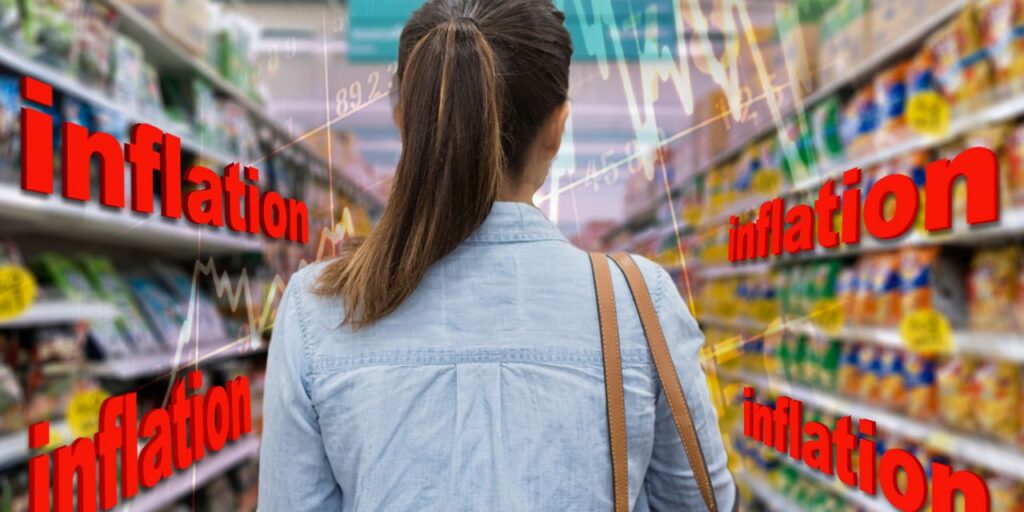Federal Reserve policy makers have indicated they may pause interest-rate hikes — a decision that would sentence Americans to inflation considerably above the Fed’s 2% target.
Much has been made of raising the fed-funds rate from near zero to just above 5% in just 14 months, but the Fed has not faced inflationary pressures this intense since the early 1980s. Paul Volcker boosted rates a lot more when he broke that inflation.
The consumer-price index and prices excluding food and energy are still rising at about 5%. Services excluding energy, which are particularly sensitive to labor costs, are rising about 7%.
Recent Labor Department reports indicate that wage growth has not slowed and thanks to productivity tanking, unit labor costs are rising at 6.3% a year.
Job openings have declined, but still 1.6 employment opportunities are available for every person seeking work. Before the pandemic, the ratio was about 1.2 and during much of the 2010s, less than 1.0.
Fed chief Jerome Powell puts a great deal of weight on the notion that inflation expectations are firmly anchored — but where? According to a recent Conference Board survey, households expect prices to rise more than 5% over the next year. Clearly, consumer expectations have broken loose from the Fed’s 2% target.
Businesses keep raising prices. For example, car dealers are taking bigger markups. They expect rising wages will bear higher prices in a tight labor market. Airline seats are scarce because furloughed employees moved to more stable industries in the wake of the pandemic. This pattern repeats in much of the services economy. For example, rental car agencies appear reluctant to ramp up their fleets and are exploiting their oligopoly power.
As Powell pulls the reins, President Joe Biden puts the whip to the horses. The president’s infrastructure, industrial polices and other initiatives have increased federal spending to $6.4 trillion this year from $4.5 trillion in 2019, when the U.S. economy was at full employment,
This creates more demand for goods and services than the economy can produce, and whatever is achieved through the debt-ceiling negotiations will not substantially reverse this huge jump.
New-home building has cooled, but nonresidential construction for highways, solar farms and semiconductor plants is rolling along. While lumber, essential in new homes, sees fading prices, concrete and cement, essential in commercial construction, endure global shortages.
Storm clouds
The Fed suffers from a credibility problem. The central bank was promiscuous during the pandemic to accommodate the Biden administration’s spending. Biden printed bonds to fund the American Rescue Plan, Infrastructure Act, Inflation Reduction Act and so forth. Powell manufactured greenbacks to buy many of those.
Storm clouds are gathering. The stress that higher interest rates place on regional banks makes business loans tougher to obtain.
Consumers are piling on credit-card debt and turning to buy-now-pay-later apps to purchase food, gas and other daily essentials.
Home foreclosures are rising and office-building landlords hit by the shift to work-from-home and flight from blue to red states are missing mortgage payments. A deluge of shaky car loans threatens the price-increase-induced auto sector recovery.
Also read: Local banks are lifeline for small business — America’s economic engine. They need government support.
Indeed, U.S. GDP advanced just 1.3% during the first quarter due to a slowdown in business investment. Consumer spending carried the economy to modest growth but virtually all of that was stacked into January — consumer activity slowed the next two months.
All this should ultimately cause consumers and businesses to curb private demand and make space for Biden’s investments in public works, green energy and semiconductors, and allow a modestly growing supply of workers and materials catch up with demand.
That makes Powell’s job tougher, too. Powell has said the Fed is committed to staying the course to get inflation down to 2%, but he also has repeatedly indicated he wants to accomplish a soft landing for the economy. Achieving both requires considerable navigational skills.
Speculators are betting the Fed will cut U.S. interest rates by year-end — curbing hikes for critical 3- 5- and 10-year Treasurys, which underpin car loans along with commercial and residential mortgages. Consumers, businesses and the bond market evidently agree: To save the U.S. economy from a recession, Powell will accept considerably more annual inflation than 2%.
Peter Morici is an economist and emeritus business professor at the University of Maryland, and a national columnist.
More: Rate hikes haven’t brought inflation down to the Fed’s 2% target. Here’s what the central bank could do next.
Plus: The only market forecast that should matter to stock investors: When does the Fed decide that higher inflation is OK?
Read the full article here











